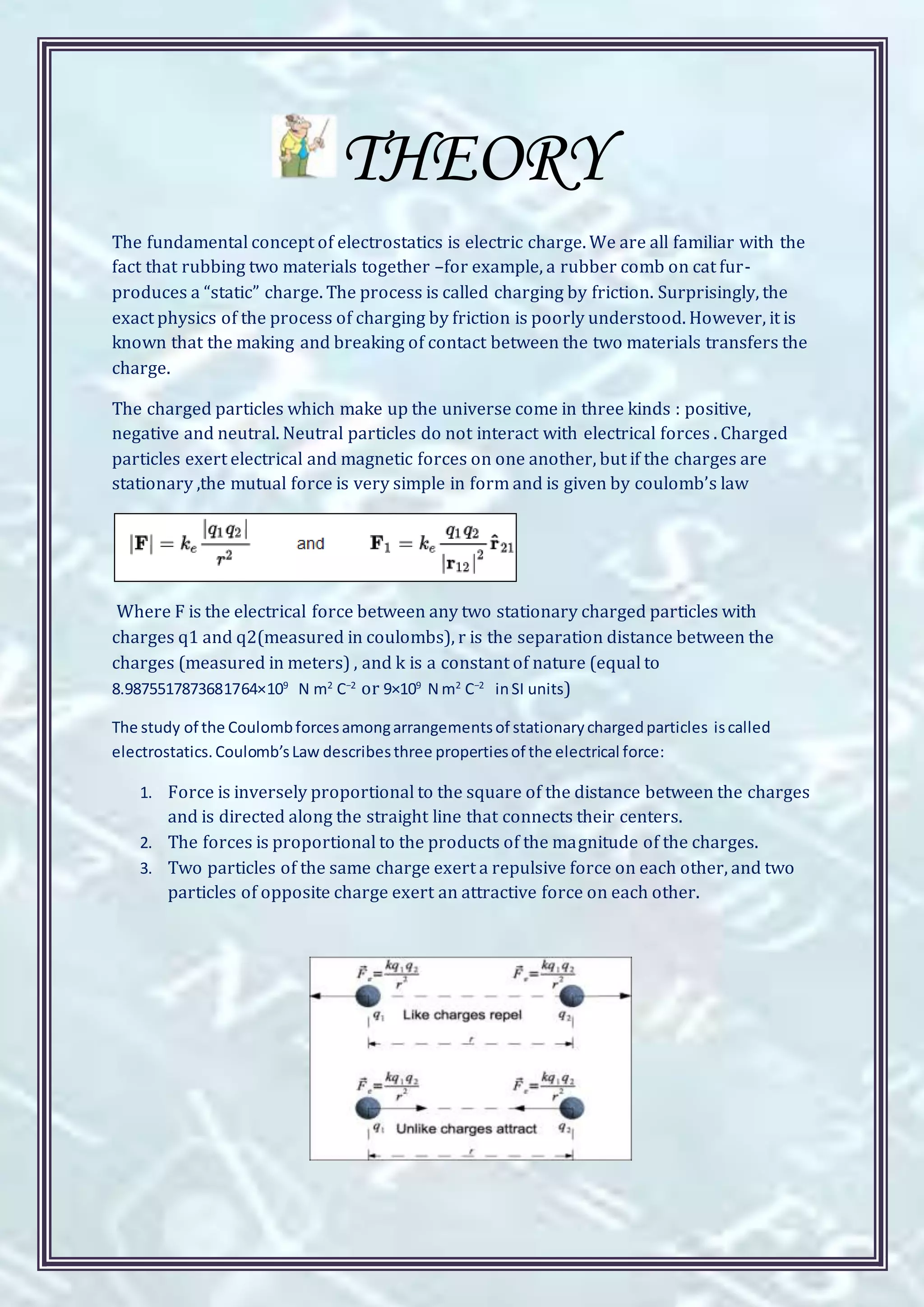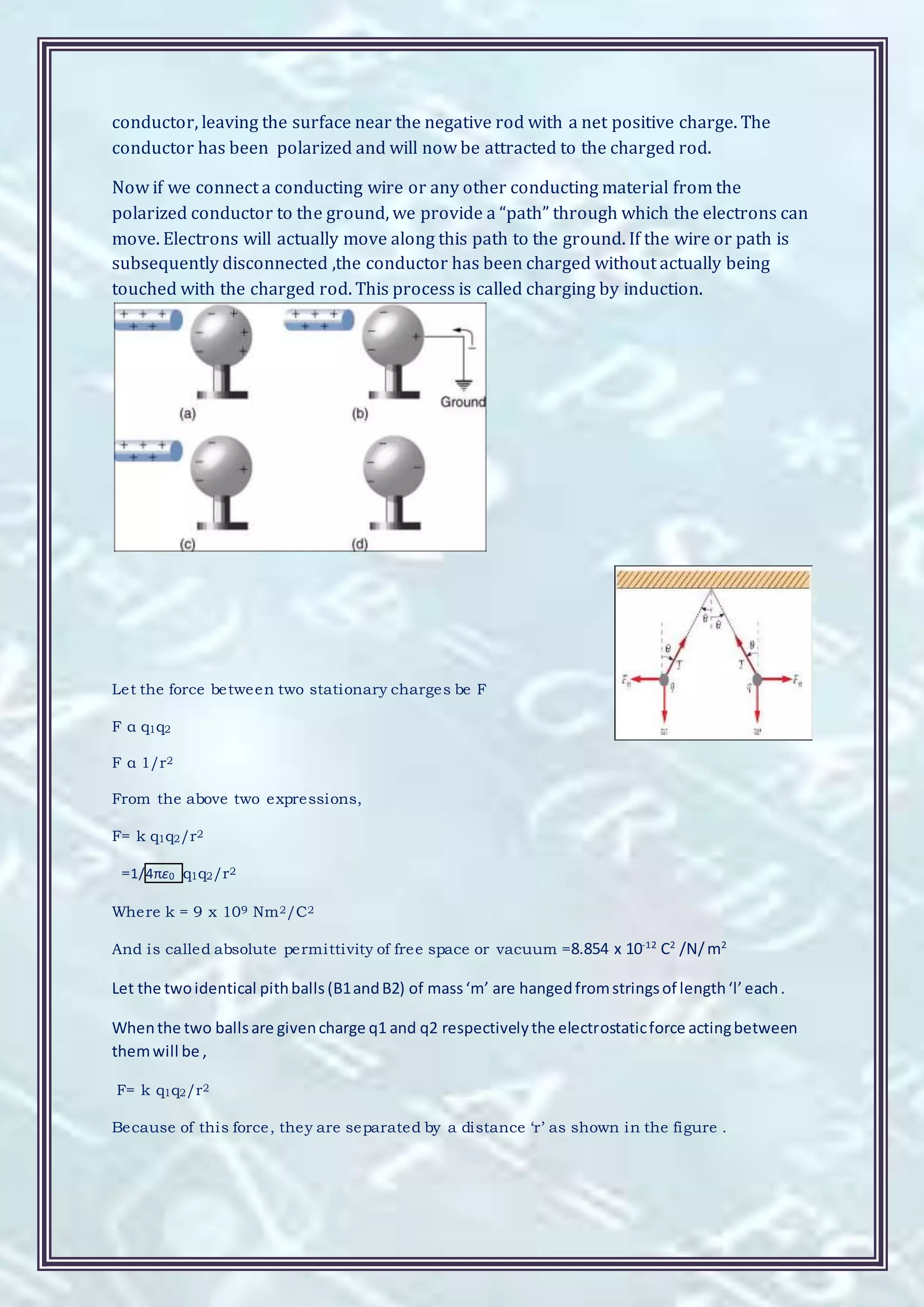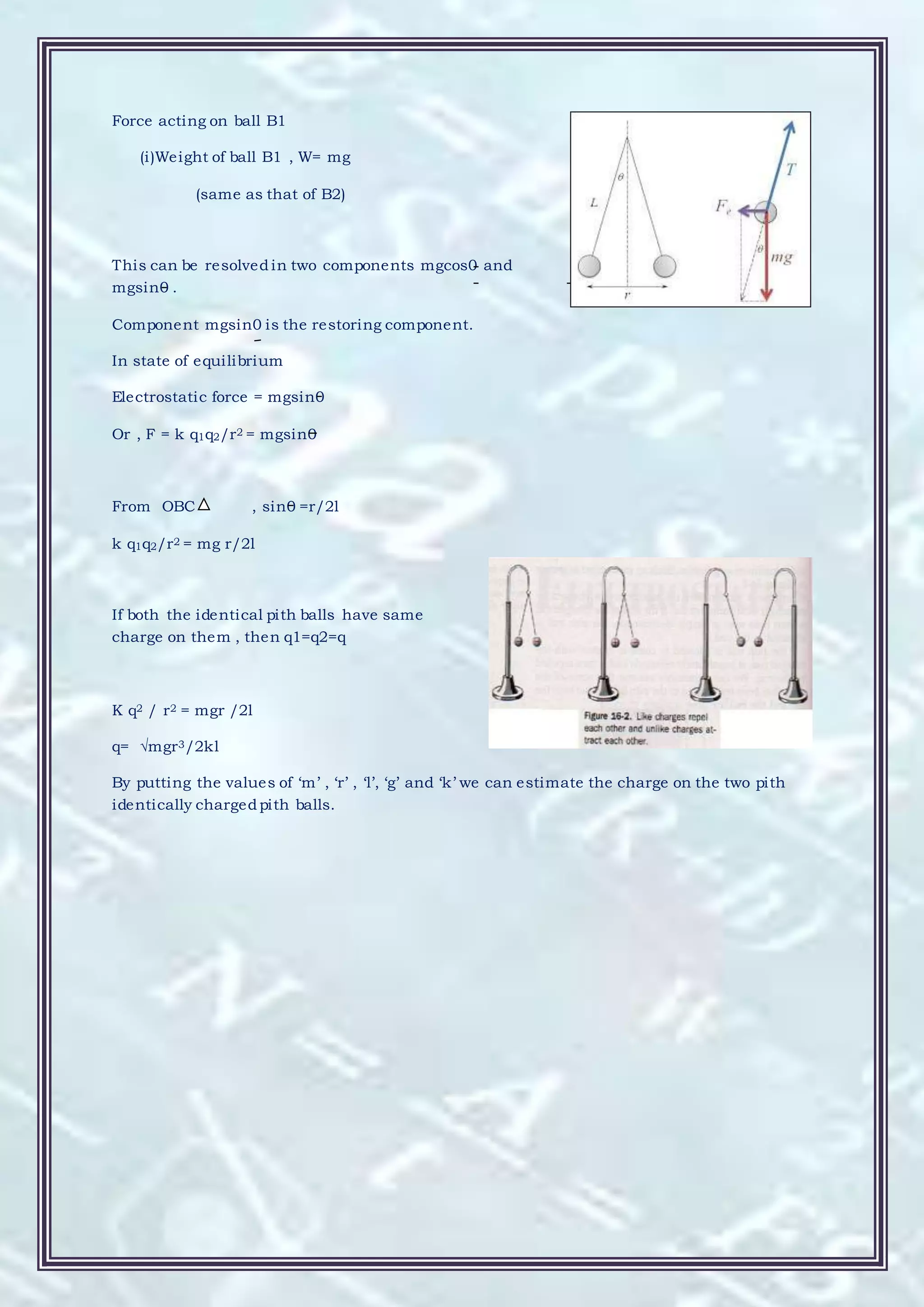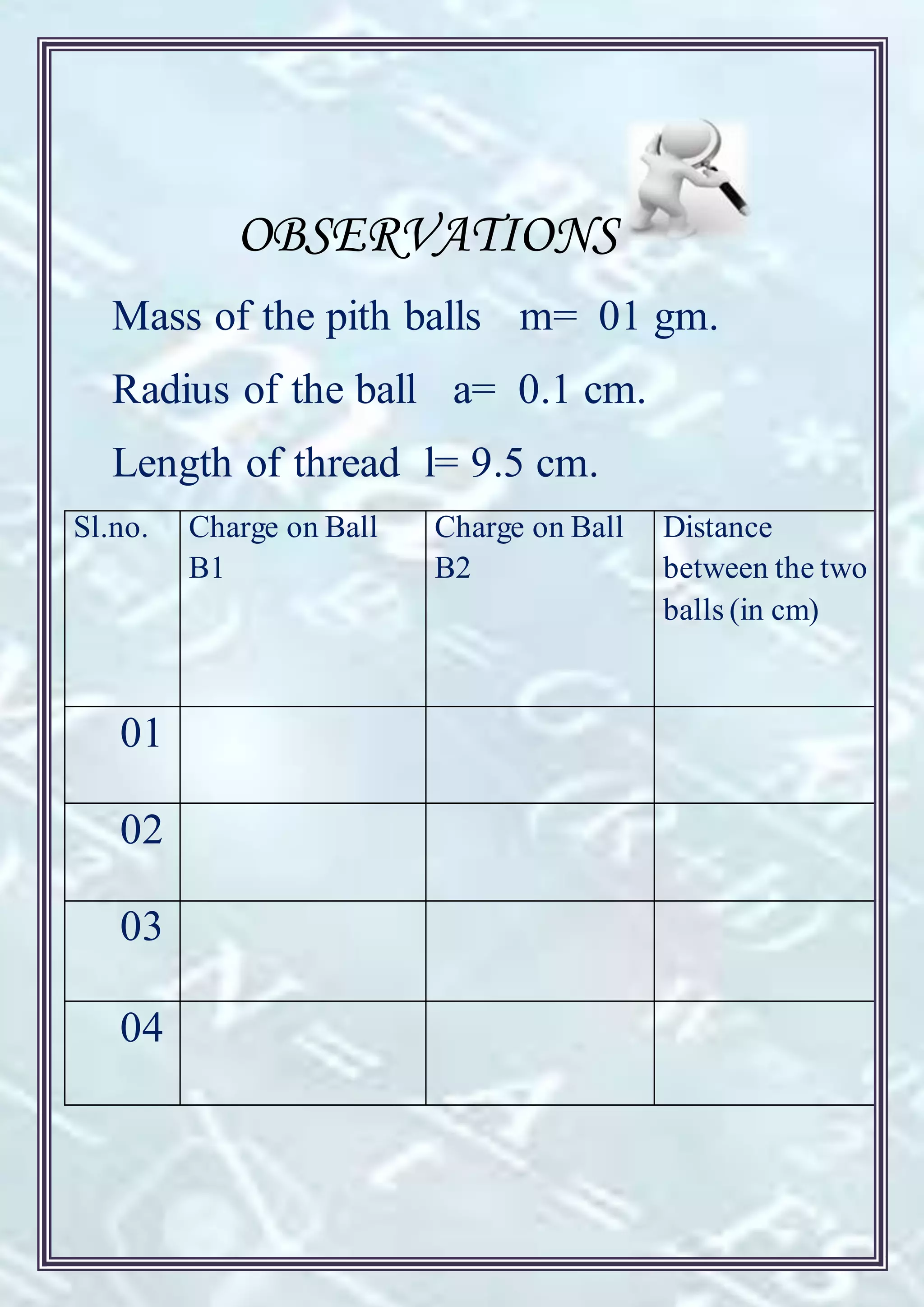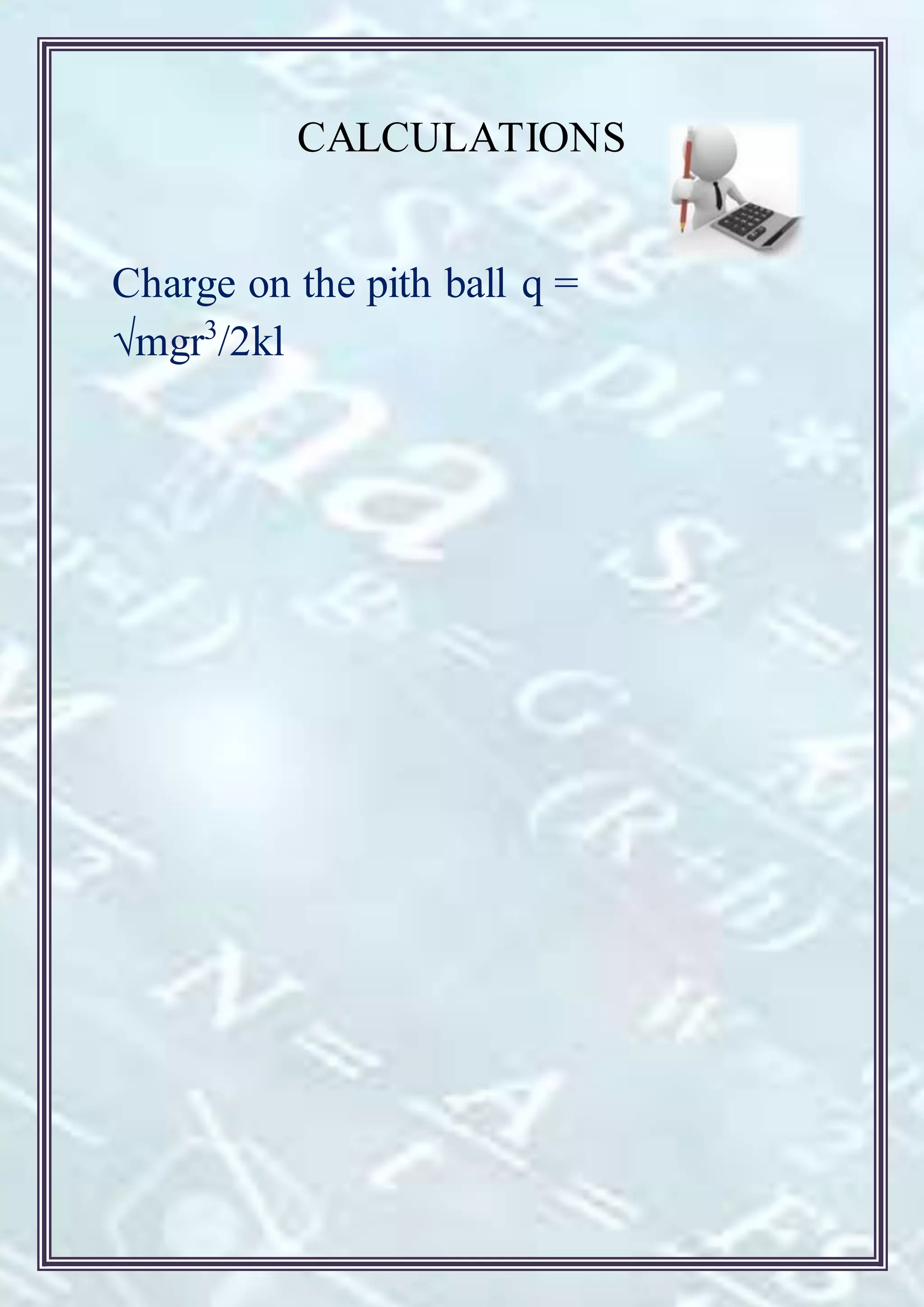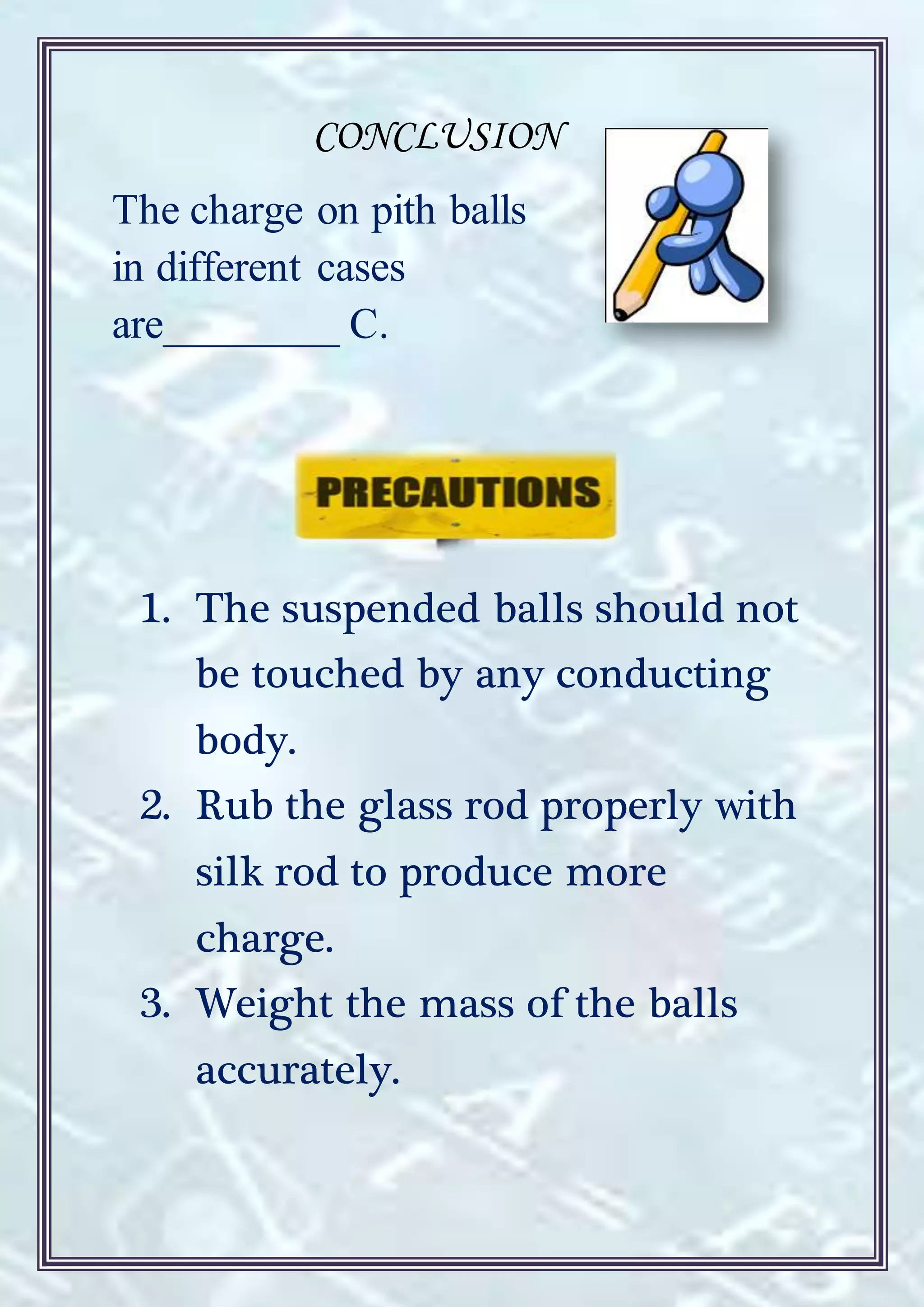This document is a physics investigatory project certificate that certifies a student's successful completion of a project estimating the charge induced on two identical styrofoam or pith balls using Coulomb's law. It outlines the historical context of electricity and magnetism, the aim and theory behind the experiment, the apparatus used, and detailed procedures for estimating the charge. The conclusion emphasizes the need for careful measurements and handling during the experiment.
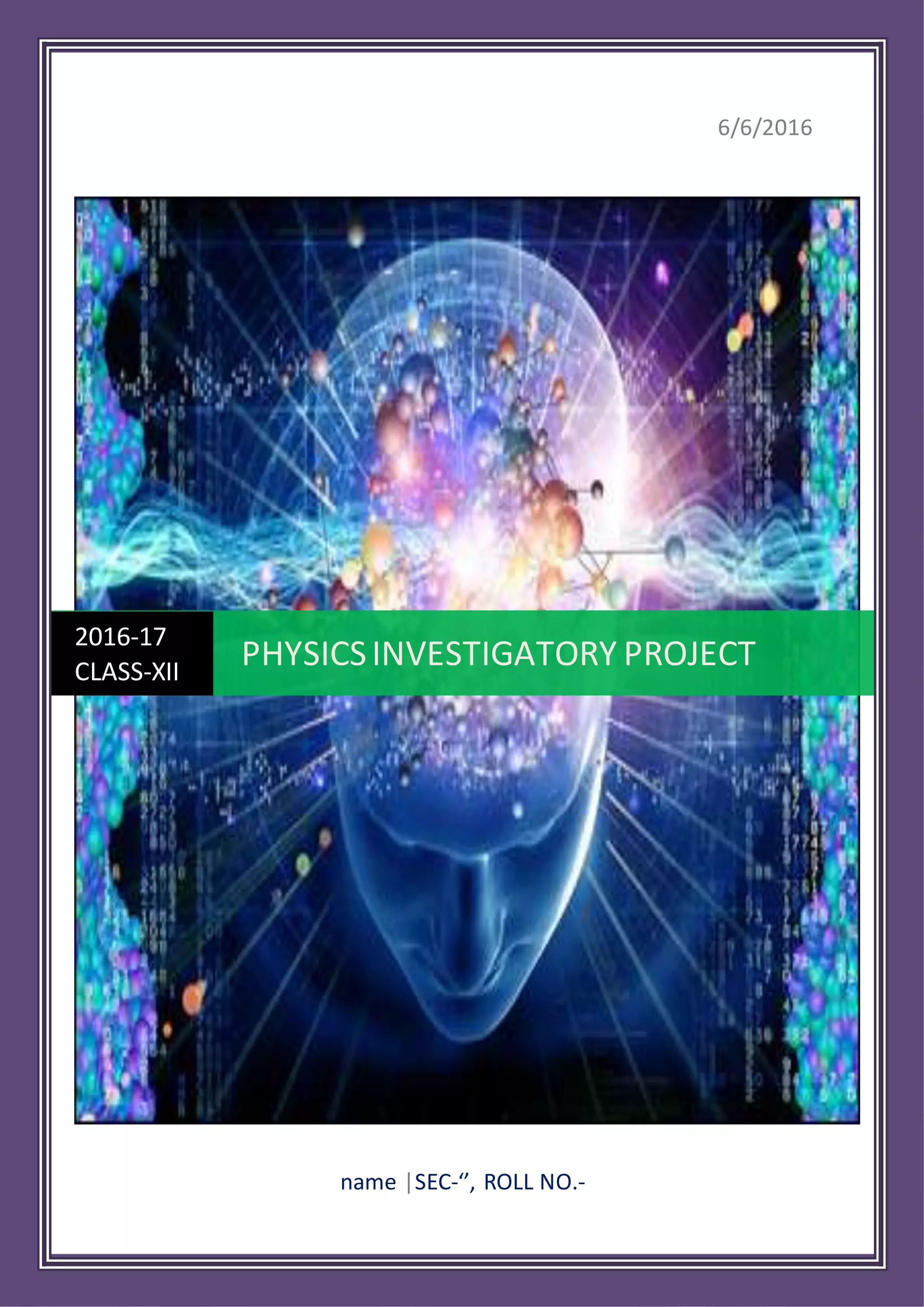
![CERTIFICATE
This is to certify that _____________ of Class- XII , section- D
has successfully completed the physics investigatory project
entitled ,
“To estimate the charge induced on each one of the two identical
styro foam balls or pith balls suspended in a vertical plane by
making use of Coulomb’s law.”
This report is the result of her endeavours and
research. It is finalized under our guidance and supervision in the
academic year 2016-2017.
[MRS. SARASWATI SANKARAN] [MRS. ANURADHARAKSHIT]
Vice Principal ,PGT physics Principal
Department of physics DelhiPublic School,Kalinga
Delhi PublicSchool, Kalinga](https://image.slidesharecdn.com/monisproject-161215055833/75/Physics-investigatory-project-2-2048.jpg)
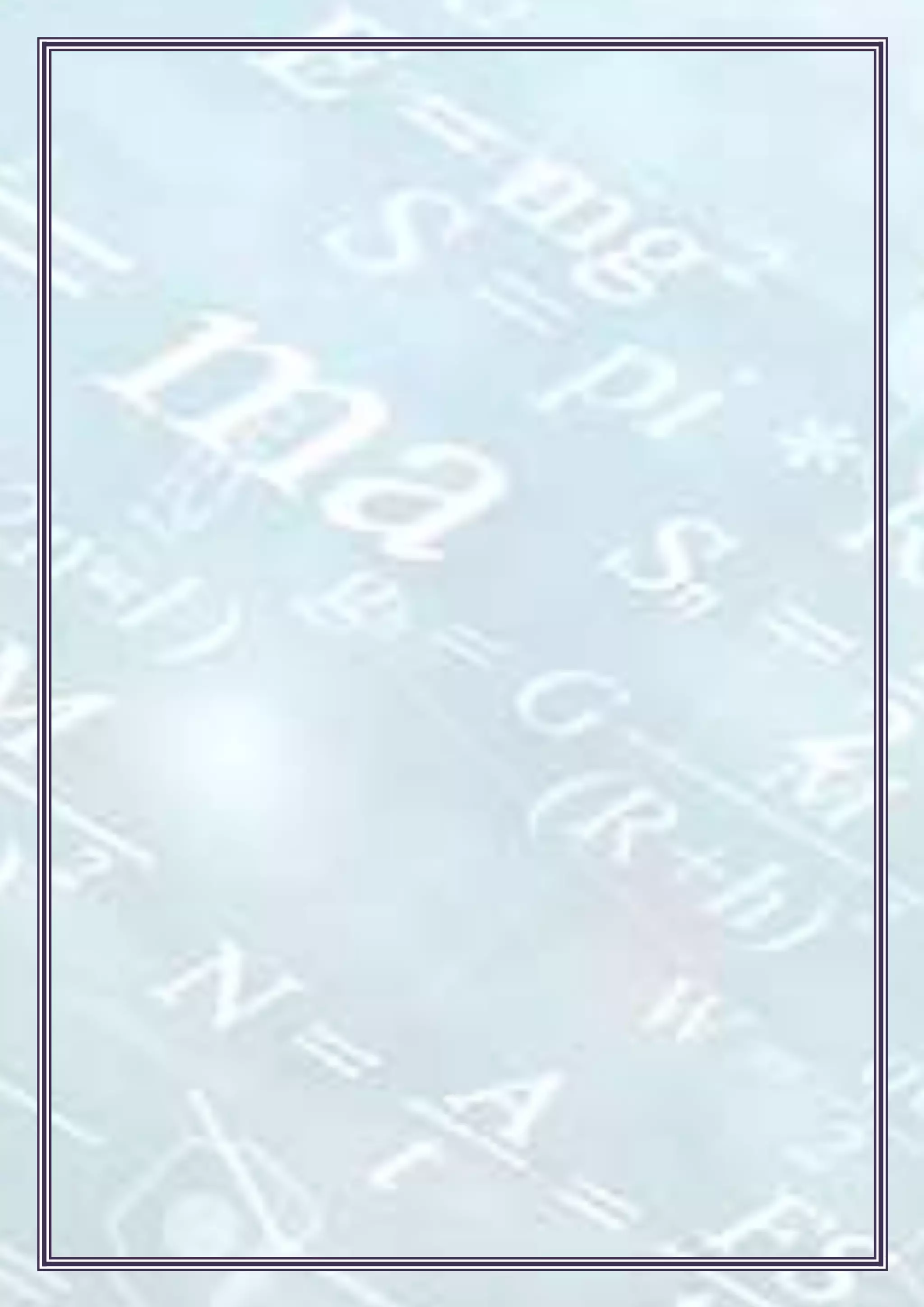

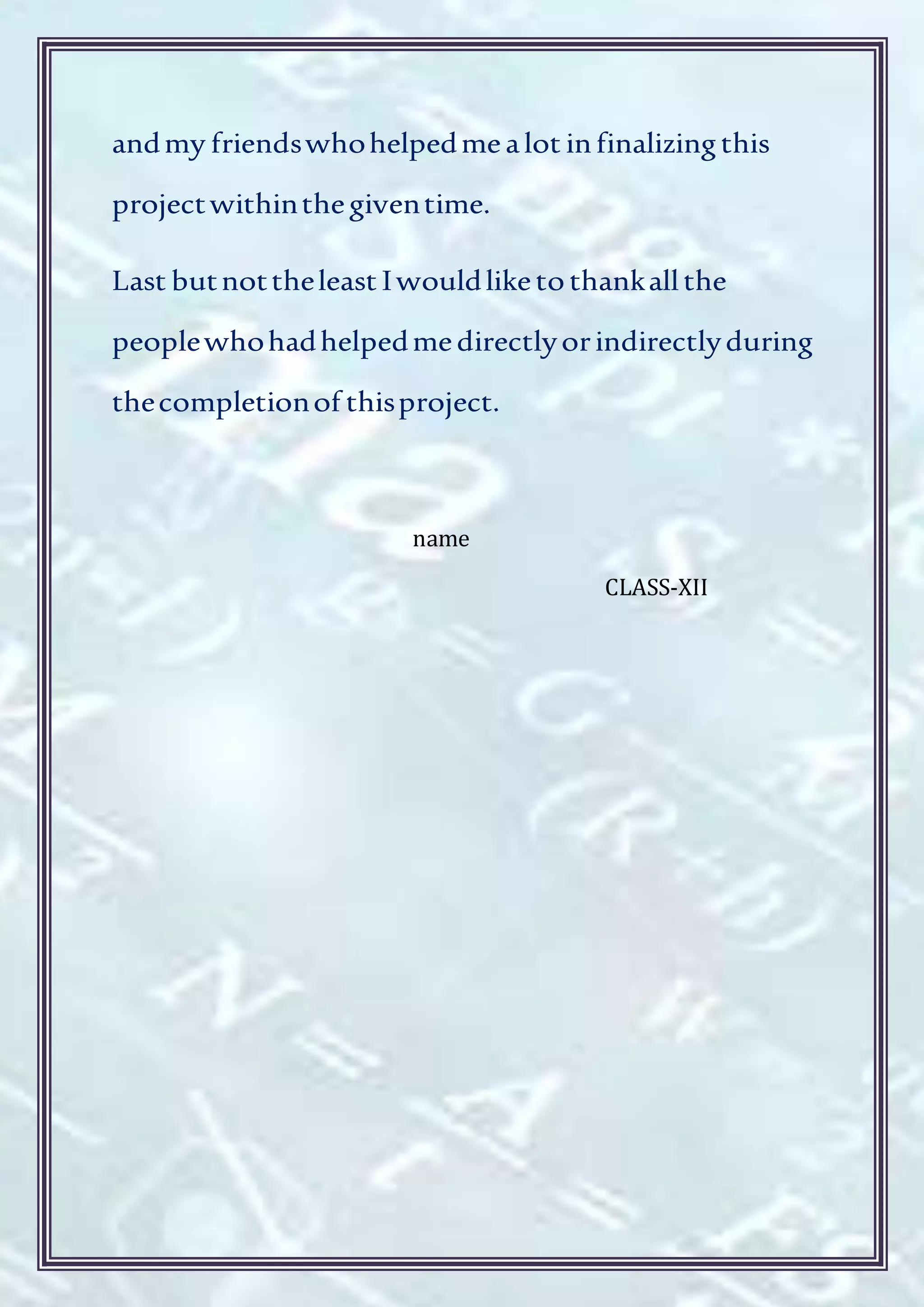

![INTRODUCTION
Ancient cultures around the Mediterranean knew that certain objects, such as rods of
amber, could be rubbed with cat's fur to attract light objects like feathers. Thales of Miletus
made a series of observations on static electricity around 600 BC, from which he believed
that friction rendered amber magnetic, in contrast to minerals such as magnetite, which
needed no rubbing. Thales was incorrect in believing the attraction was due to a magnetic
effect, but later science would prove a link between magnetism and electricity. Electricity
would remain little more than an intellectual curiosity for millennia until 1600, when the
English scientist William Gilbert made a careful study of electricity and magnetism,
distinguishing the lodestone effect from static electricity produced by rubbing amber. He
coined the New Latin word electricus ("of amber" or "like amber", from ἤλεκτρον [elektron],
the Greek word for "amber") to refer to the property of attracting small objects after being
rubbed. This association gave rise to the English words "electric" and "electricity", which
made their first appearance in print in Thomas Browne's Pseudodoxia Epidemica of 1646.
Early investigators of the 18th century who suspected that the electrical force diminished
with distance as the force of gravity did (i.e., as the inverse square of the distance) included
Daniel Bornoulli and Alessandro Volta, both of whom measured the force between plates of
a capacitor, and Franz Aeipinus who supposed the inverse-square law in 1758. Based on
experiments with electrically charged spheres, Joseph Priestly of England was among the
first to propose that electrical force followed an inverse square law, similar to Newton’s law
of universal gravitation. However, he did not generalize or elaborate on this. In 1767, he
conjectured that the force between charges varied as the inverse square of the distance.
In 1769, Scottish physicist John Robison announced that, according to his measurements, the
force of repulsion between two spheres with charges of the same sign varied as x−2.06. Inthe
early 1770s, the dependence of the force between charged bodies upon both distance and
charge had already been discovered, but not published, by Henry Cavendish of England.
Finally, in 1785, the French physicist Charles Augustin de Coulomb published his first three
reports of electricity and magnetism where he stated his law. This publication was essential to
the development of the theory of electromagnetism.He
used a torsion balance to study the repulsion and attraction
forces of charged particles, and determined that the
magnitude of the electric force between two point charges
is directly proportional to the product of the charges and
inversely proportional to the square of the distance
between them.The torsion balance consists of a bar
suspended from its middle by a thin fiber. The fiber acts as
a very weak torsion spring. In Coulomb's experiment, the
torsion balance was an insulating rod with a metal-coated ball attached to one end, suspended
by a silk thread. The ball was charged with a known charge of static electricity, and a second
charged ball of the same polarity was brought near it. The two charged balls repelled one
another, twisting the fiber through a certain angle, which could be read from a scale on the
instrument. By knowing how much force it took to twist the fiber through a given angle,
Coulomb was able to calculate the force between the balls and derive his inverse-square
proportionality law.](https://image.slidesharecdn.com/monisproject-161215055833/75/Physics-investigatory-project-7-2048.jpg)

